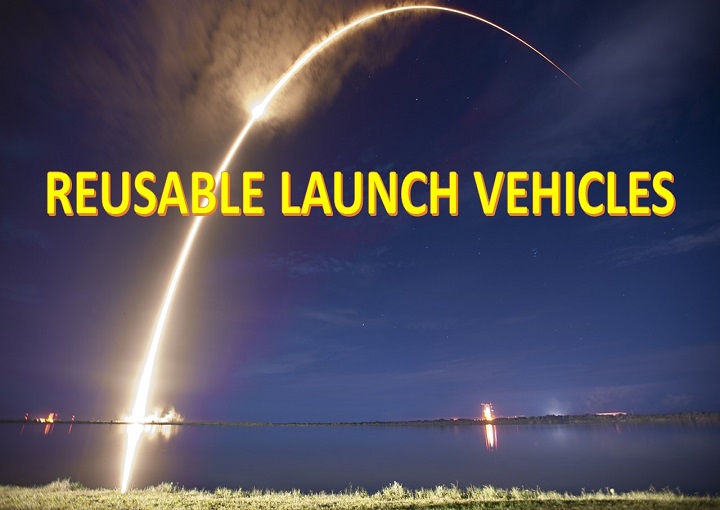Discover how reusable launch vehicles are transforming the world of space exploration. Explore the cutting-edge technology and groundbreaking innovations that are revolutionizing the way we reach the stars. Learn about the economic and environmental benefits of reusable rockets and their impact on the future of space travel. Join us on this thrilling journey into the era of reusable launch vehicles.
Introduction
In the realm of space exploration, the advent of reusable launch vehicles has brought about a paradigm shift. These innovative spacecraft have the potential to transform the way we access and explore space. By eliminating the need for expensive and disposable rockets, reusable launch vehicles offer a cost-effective and sustainable solution for launching payloads into orbit. In this article, we will delve into the concept of reusable launch vehicles, explore their advantages, discuss key technologies involved, highlight success stories, and consider the future prospects of this groundbreaking technology.
What is a Reusable Launch Vehicle?
A reusable launch vehicle (RLV) is a spacecraft that is designed to launch payloads into space and return to Earth intact for subsequent missions. Unlike traditional expendable rockets that are discarded after a single use, reusable launch vehicles are built with the ability to land and be refurbished for future launches. This reusability feature significantly reduces the cost of space missions and opens up new possibilities for exploration.
Advantages of Reusable Launch Vehicles
Cost Reduction:
One of the primary advantages of reusable launch vehicles is the substantial reduction in launch costs. Traditional rockets are essentially one-time-use vehicles, where the majority of the components are discarded after each mission. Reusable launch vehicles, on the other hand, can be flown multiple times, drastically reducing the expenses associated with manufacturing new rockets for every launch.
Increased Accessibility to Space:
With the cost reduction brought by reusable launch vehicles, space exploration becomes more accessible to a broader range of organizations and entities. Smaller companies, startups, and even educational institutions can now undertake space missions that were previously financially prohibitive.
Environmental Benefits:
Reusable launch vehicles contribute to a more sustainable approach to space exploration. By reusing spacecraft, there is a significant reduction in waste and debris in orbit. This helps mitigate the growing problem of space debris, which poses risks to operational satellites and future space missions.
Key Technologies in Reusable Launch Vehicles
Reusable launch vehicles incorporate several key technologies to enable their successful operations. These technologies include:
Vertical Takeoff and Landing (VTVL):
Many reusable launch vehicles utilize vertical takeoff and landing systems, allowing them to launch and land vertically. This technology is crucial for achieving the desired reusability, as it enables the spacecraft to land vertically and be easily recovered for future missions.
Thermal Protection Systems (TPS):
Reusable launch vehicles experience intense heat during re-entry into Earth’s atmosphere. To withstand these extreme temperatures, they are equipped with advanced thermal protection systems. These systems are designed to be efficient and reliable, ensuring a smooth and controlled flight trajectory.
Landing Gear:
Another critical technology in reusable launch vehicles is the landing gear. These systems allow the spacecraft to safely touch down on landing pads or designated areas after completing their mission. The landing gear must be robust enough to withstand the forces and impact associated with landing, ensuring the structural integrity of the vehicle.
Challenges in Developing Reusable Launch Vehicles
While reusable launch vehicles offer significant advantages, their development poses unique challenges that must be overcome. Some of these challenges include:
Engineering Complexity:
Designing and building reusable launch vehicles requires complex engineering solutions. The integration of reusable systems, such as landing gear and thermal protection systems, adds an additional layer of complexity to the spacecraft’s overall design. Engineers must carefully consider various factors, including weight, structural integrity, and aerodynamics, to ensure a successful and safe mission.
Safety Considerations:
Reusable launch vehicles must meet stringent safety requirements to protect both crew members and payloads. The re-entry phase, in particular, poses risks such as high temperatures and forces that need to be carefully managed to ensure the safety of the vehicle and its occupants.
Technological Innovations:
Developing reusable launch vehicles often necessitates technological advancements in various areas. These innovations may include improved materials for thermal protection, more efficient propulsion systems, and advanced guidance and control systems. Research and development efforts continue to push the boundaries of technology to make reusable launch vehicles more capable and reliable.
Success Stories in Reusable Launch Vehicles
Several organizations have made significant progress in the development and operation of reusable launch vehicles. Some notable success stories include:
SpaceX’s Falcon 9 and Falcon Heavy:
SpaceX, founded by Elon Musk, has made remarkable strides in reusable launch vehicles with its Falcon 9 and Falcon Heavy rockets. These vehicles incorporate vertical landing capabilities, allowing the first stage boosters to return to Earth and land safely for refurbishment and reuse. SpaceX’s achievements in reusability have revolutionized the commercial space industry and paved the way for future exploration.
Blue Origin’s New Shepard:
Blue Origin, led by Jeff Bezos, has successfully demonstrated its reusable launch vehicle, New Shepard. This suborbital spacecraft is designed for vertical takeoff and landing, with both the rocket booster and crew capsule being reusable. Blue Origin’s focus on tourism and suborbital research has brought the concept of reusable launch vehicles closer to everyday individuals.
Boeing’s Starliner:
Boeing’s Starliner is a crewed reusable spacecraft designed for missions to the International Space Station (ISS). While initially intended for full reusability, the current configuration allows for partial reusability, with the capsule being reusable for multiple missions. Boeing’s contribution to the development of reusable crewed vehicles showcases the potential for reusable technology in human spaceflight.
Future Prospects of Reusable Launch Vehicles
The future of reusable launch vehicles looks promising, with several advancements on the horizon:
Advancements in Technology:
Continued advancements in materials, propulsion systems, and other critical technologies will enhance the capabilities of reusable launch vehicles. This includes the development of more efficient engines, lighter and stronger materials for spacecraft construction, and improved thermal protection systems. These technological advancements will further improve the reusability and reliability of launch vehicles.
Expansion of Commercial Space Industry:
The commercial space industry is experiencing rapid growth, with an increasing number of companies entering the market. Reusable launch vehicles play a crucial role in making space more accessible and economically viable for commercial ventures. As the industry expands, more innovative applications and missions utilizing reusable launch vehicles are likely to emerge.
Conclusion
Reusable launch vehicles have revolutionized space exploration by offering cost-effective, sustainable, and accessible solutions for launching payloads into orbit. The advantages of reusable launch vehicles, including cost reduction, increased accessibility to space, and environmental benefits, make them an attractive option for space missions.
Key technologies, such as vertical takeoff and landing systems, thermal protection systems, propulsion systems, and landing gear, enable the successful operation of reusable launch vehicles. However, the development of reusable launch vehicles comes with its own set of challenges, including engineering complexity, safety considerations, and the need for technological innovations.
Notable success stories, including SpaceX’s Falcon 9 and Falcon Heavy, Blue Origin’s New Shepard, and Boeing’s Starliner, demonstrate the feasibility and potential of reusable launch vehicles. These organizations have made significant progress in reusability, paving the way for future advancements and exploration.
Looking ahead, advancements in technology, such as improved materials and propulsion systems, will further enhance the capabilities of reusable launch vehicles. Additionally, the expansion of the commercial space industry will create new opportunities and applications for reusable launch vehicles.
In conclusion, reusable launch vehicles are transforming space exploration by reducing costs, increasing accessibility, and promoting sustainability. As technology continues to advance and the commercial space industry grows, the future of reusable launch vehicles holds immense potential for further advancements and exciting discoveries.
FAQs
1. How does a reusable launch vehicle work?
Ans. A reusable launch vehicle is designed to launch payloads into space and return to Earth intact for future missions. It incorporates technologies such as vertical takeoff and landing systems, thermal protection systems, and robust landing gear to enable reusability.
2. What are the cost savings associated with reusable launch vehicles?
Ans. Reusable launch vehicles significantly reduce launch costs by eliminating the need to manufacture new rockets for every mission. The ability to reuse major components of the spacecraft leads to substantial cost savings in the long run.
3. Are reusable launch vehicles safer than traditional expendable rockets?
Ans. Reusable launch vehicles undergo stringent safety considerations to ensure the protection of crew members and payloads. While they pose unique challenges, such as re-entry risks, advancements in technology and safety measures make reusable launch vehicles a safe option for space missions.
4. Can reusable launch vehicles be used for manned missions to other planets?
Ans. Reusable launch vehicles have the potential to support manned missions to other planets. Their reusability and cost-effectiveness make long-duration space travel more feasible and economically viable.
5. How long can a reusable launch vehicle be used before retirement?
Ans. The lifespan of a reusable launch vehicle depends on various factors, including the number of missions it has flown, the level of refurbishment required after each mission, and technological advancements. With proper maintenance and upgrades, reusable launch vehicles can have extended operational lives.

